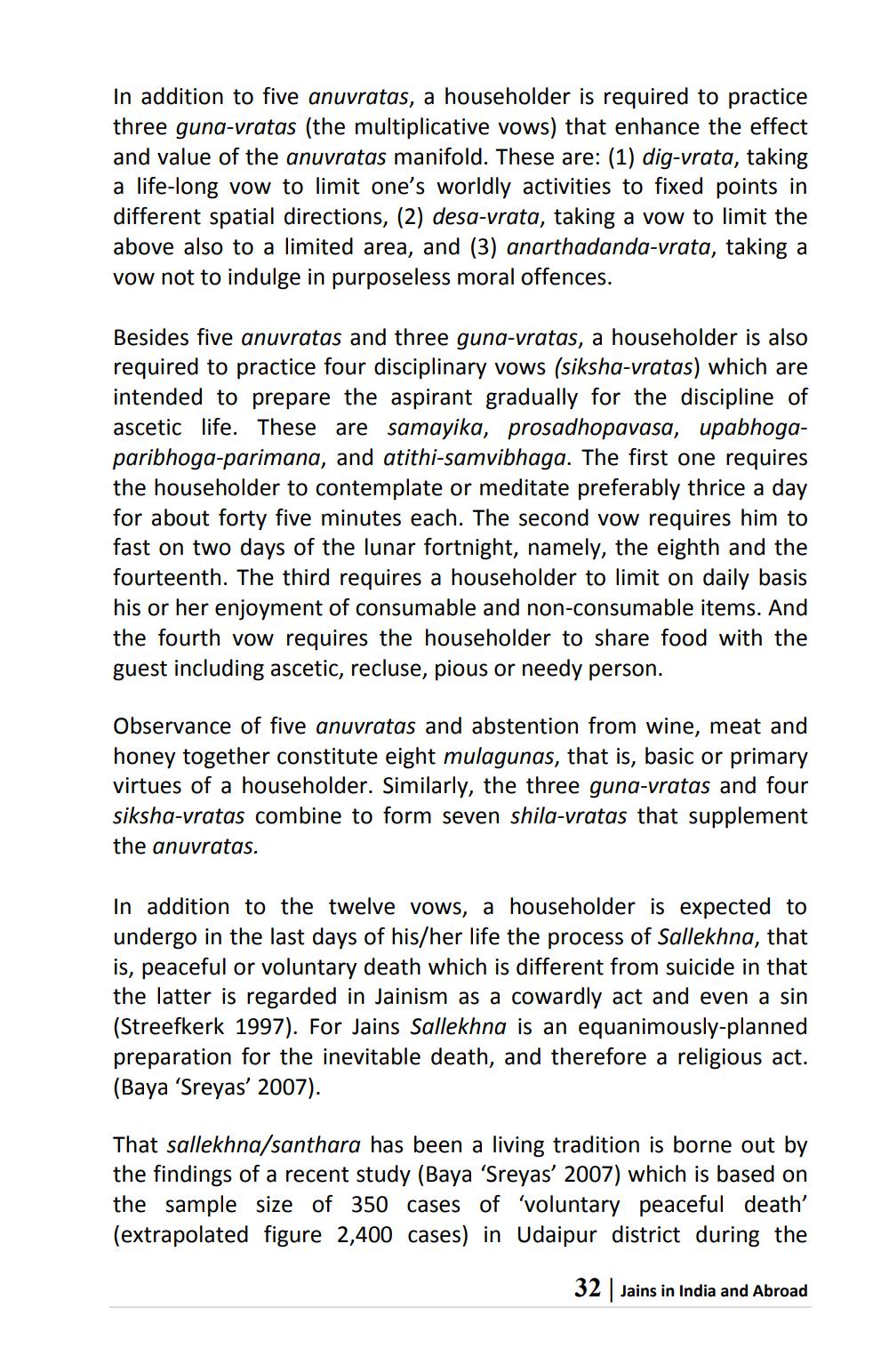________________
In addition to five anuvratas, a householder is required to practice three guna-vratas (the multiplicative vows) that enhance the effect and value of the anuvratas manifold. These are: (1) dig-vrata, taking a life-long vow to limit one's worldly activities to fixed points in different spatial directions, (2) desa-vrata, taking a vow to limit the above also to a limited area, and (3) anarthadanda-vrata, taking a vow not to indulge in purposeless moral offences.
Besides five anuvratas and three guna-vratas, a householder is also required to practice four disciplinary vows (siksha-vratas) which are intended to prepare the aspirant gradually for the discipline of ascetic life. These are samayika, prosadhopavasa, upabhogaparibhoga-parimana, and atithi-samvibhaga. The first one requires the householder to contemplate or meditate preferably thrice a day for about forty five minutes each. The second vow requires him to fast on two days of the lunar fortnight, namely, the eighth and the fourteenth. The third requires a householder to limit on daily basis his or her enjoyment of consumable and non-consumable items. And the fourth vow requires the householder to share food with the guest including ascetic, recluse, pious or needy person.
Observance of five anuvratas and abstention from wine, meat and honey together constitute eight mulagunas, that is, basic or primary virtues of a householder. Similarly, the three quna-vratas and four siksha-vratas combine to form seven shila-vratas that supplement the anuvratas.
In addition to the twelve vows, a householder is expected to undergo in the last days of his/her life the process of Sallekhna, that is, peaceful or voluntary death which is different from suicide in that the latter is regarded in Jainism as a cowardly act and even a sin (Streefkerk 1997). For Jains Sallekhna is an equanimously-planned preparation for the inevitable death, and therefore a religious act. (Baya 'Sreyas' 2007).
That sallekhna/santhara has been a living tradition is borne out by the findings of a recent study (Baya 'Sreyas' 2007) which is based on the sample size of 350 cases of 'voluntary peaceful death' (extrapolated figure 2,400 cases) in Udaipur district during the
32 Jains in India and Abroad




